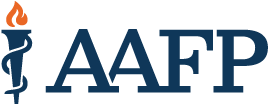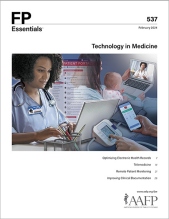
This clinical content conforms to AAFP criteria for CME.
Remote patient monitoring (RPM) provides real-time clinical patient data to the medical team. The foundational element of RPM is communication, including data processing and integration in the electronic health record and communication of data between patients and clinicians. Patient portals are integral to this communication and their use can result in improved health outcomes and patient safety. Patient portals promote engagement of patients in their care, increase access to the medical team, and integrate RPM system data. RPM systems can monitor a spectrum of parameters related to chronic conditions, from vital signs (eg, heart and respiration rates, blood pressure, blood oxygen and glucose levels) to advanced cardiovascular measures. Some RPM systems are capable of automated monitoring. Health care insurance coverage of RPM systems varies widely, which has health equity implications, particularly for high-risk patients with endocrine and cardiovascular conditions. Additional challenges to widespread adoption of RPM include its contribution to administrative burden for physicians, patient data privacy issues, and variable effectiveness of RPM systems in the management of different chronic conditions.
Case 3. AK is scheduled for a follow-up visit today for congestive heart failure (CHF) after a recent hospital admission. You review his record with your medical team in the morning huddle. AK has moderately uncontrolled type 2 diabetes, hypertension, a body mass index of 39 kg/m2, obstructive sleep apnea, and CHF with reduced ejection fraction (40%). He has been hospitalized five times in the past year.
Subscribe
From $350- Immediate, unlimited access to FP Essentials content
- 60 CME credits/year
- AAFP app access
- Print delivery available
Edition Access
$44- Immediate, unlimited access to this edition's content
- 5 CME credits
- AAFP app access
- Print delivery available
